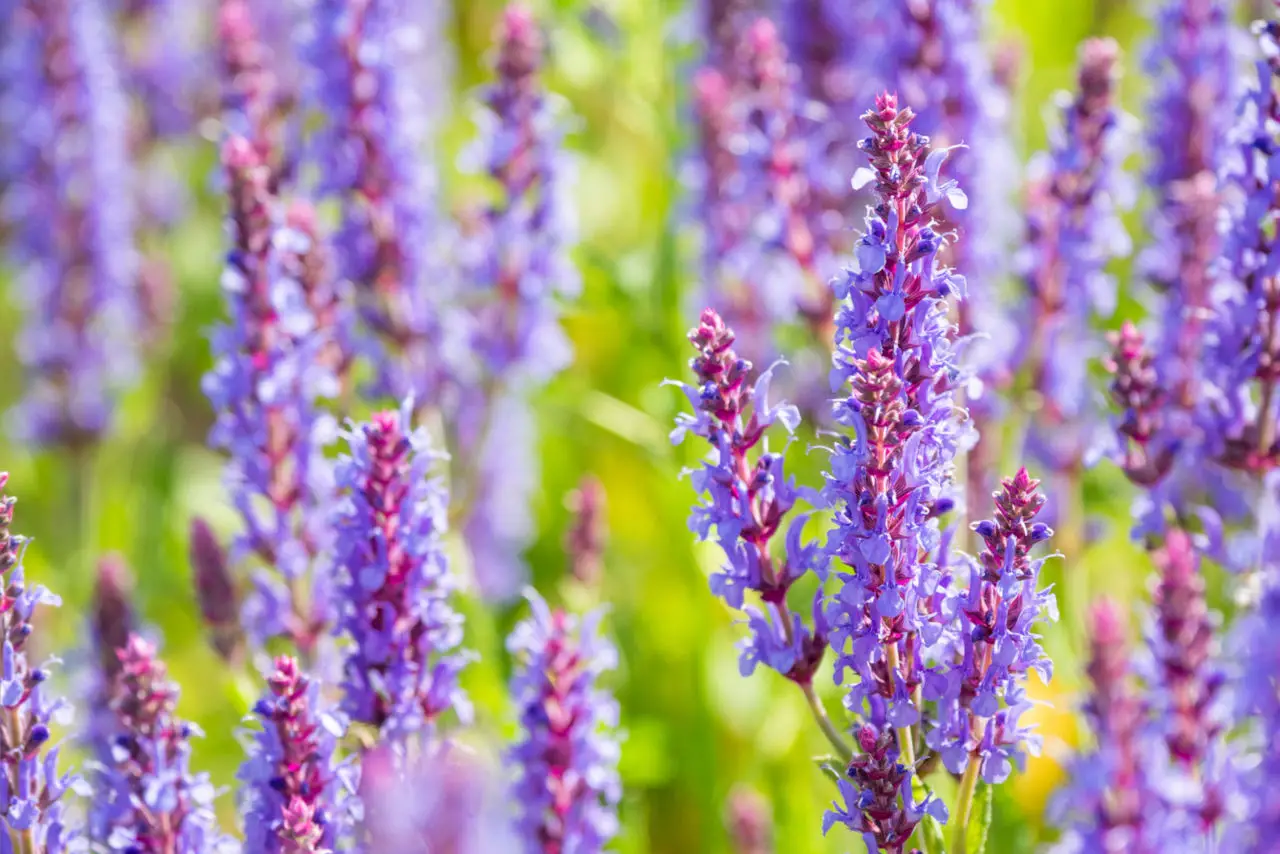At a Glance
Woodland sage (Salvia nemorosa) is edible and can be used for edible decorations, but for medicinal purposes and tasty tea you should prefer the common sage (Salvia officinalis).
Information about whether the woodland sage is edible or not varies depending on whom you ask. Without a doubt, this plant is not the better-known common sage (Salvia officinalis) but only a relative.
But also the woodland sage (Salvia nemorosa) is quite edible and is also supposed to have a certain healing power. However, the effect varies greatly depending on the variety of sage.
There is nothing against using woodland sage flowers as edible decoration, for example. For healing purposes, however, you should resort to the recognized medicinal herb Salvia officinalis. Also, bees and other insects like this decorative plant very much.
If you want to find out more about the woodland sage, have a look at our woodland sage complete guide!
Woodland Sage Care
The woodland sage is very heat-loving. Give it as bright and rather dry a location as possible, preferably in full sun. But even in light shade, you may still enjoy the colorful bloom.
The soil should be humic and permeable, and loamy-sandy, gladly also predominantly sandy. If it is too heavy and firm, mix in some humus and/or sand to loosen it up.
If the woodland sage feels comfortable in its location, then it is quite easy to care for and undemanding. It needs fertilizer only twice a year and you should water this plant only during the flowering period, but even then only moderately.
The woodland sage tolerates occasional drought, but it is very sensitive to waterlogging. Many varieties of woodland sage are more or less hardy.
The Better Edible Alternative: Common Sage
The common sage (Salvia officinalis) is still grown today in herb gardens for healing purposes. It is versatile as a home remedy, but of course, does not replace a visit to the doctor.
Native to the Mediterranean region in Europe, it also grows quite well in many regions worldwide. With its anti-inflammatory and astringent effect, it is the first choice for sore throats and inflammation of the throat.
The Most Important Facts About Woodland Sage in Brief
- not to be confused with Salvia officinalis.
- edible
- flowers can be used as edible decoration
- loves warmth and light
- water moderately
- avoid waterlogging
Good to Know
The woodland sage is usually grown as an ornamental plant. For tasty teas or healing applications you should preferably plant the common sage (Salvia officinalis).


